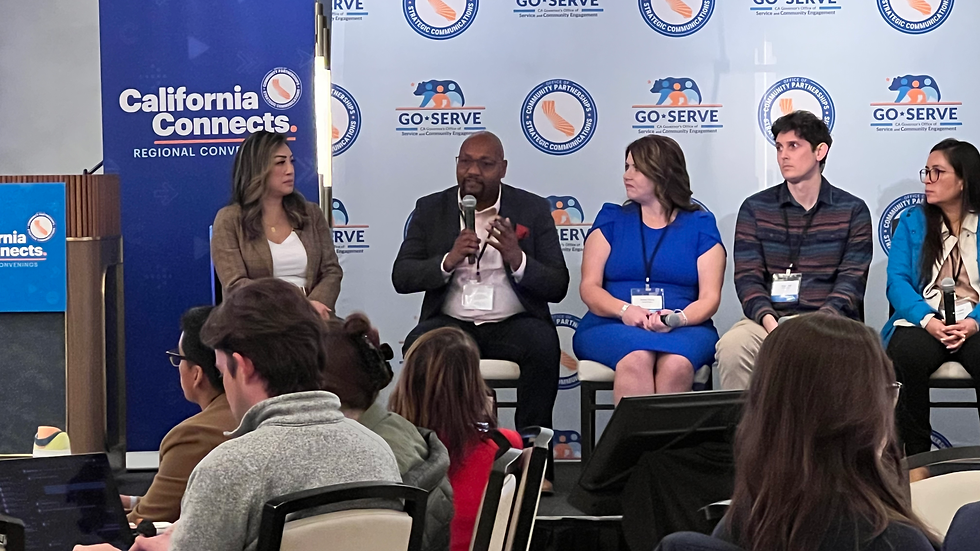City of Fresno town hall meeting reveals bias with the $70 million state allocation to disadvantage
- INFO-MD Staff

- May 4, 2017
- 3 min read

FRESNO, CA—In December 2016, the California Strategic Growth Council (SGC) adopted the Transformative Climate Community Program, a regulation that would ensure funds be allocated to Los Angeles and Fresno and a third location. Out of the current $140 million allocation, more than half of these funds were to be allocated to the City of Fresno, being that it is the largest per capital population living in the most disadvantages communities in the state, according to the CalEnviroScreen.
The Assembly Bill 2722 states that the Transformative Climate Community Program administered by the SGC was to
“ … fund the development and implementation of neighborhood-level transformative climate community plans that include multiple coordinated greenhouse gas emissions reduction projects that provide local economic, environmental, and health benefits to disadvantaged communities, as described in Section 39711 of the Health and Safety Code.”
However concerned Fresno citizens are questioning how the High Speed Rail is a part of this funding allocation which is supposed to be directed specifically toward disadvantaged communities—they feel that somehow the southwest community will be left out.

At the end of last month, an unpublicized small town hall meeting was held at St. Rest Baptist Church and moderated by Dist. 3 Councilman, Oliver Baines and Pastor DJ Criner to address the southwest Fresno community concerns in regards to the $70 million allocation. SGC executive director Randall Winston presented a PowerPoint presentation titled, “What is Transformative Climate Communities?” where he also discussed the tentative application process and timeline, where there is another 30-day public comment period geared toward late May to be announced.
According to the document, by June, there will be a second round of public feedback on a draft of the program guidelines to be announced, with a final draft to be presented by late July.
Winston outlined the plan for “neighborhood-level transformation,” by showing that there will be integrated projects that include transit-oriented affordable housing, transit and active transportation, urban forestry & parks, renewable energy, clean vehicle, food systems and recycling. The plan would also include workforce training and economic development. According to the plan, this would be ideal to attract private and other investments.
Fresno residents who were bused into the meeting expressed their concerns in regards to the funding from the government grant, missing the southwest Fresno area as the priority. In fact, Mayor Lee Brand made a previous public comment that a majority of the funding would be allocated to downtown Fresno.
Applicants eligible for the funds according to the document include “diverse teams with multiple organizations and stakeholders,” who must also have the ability to leverage matching funds and show strong and diverse community support and participation.
The presentation also included a briefing of planning grants of $1.5 million for 5-10 grants statewide; it was not clear on whether Fresno was also eligible for this funding.

About the SGC
In September 2008 SB 732 was signed into law, establishing the Strategic Growth Council. According to the CA.gov website, SGC is a cabinet level committee that is tasked with coordinating the activities of state agencies to:
Improve air and water quality
Protect natural resources and agriculture lands
Increase the availability of affordable housing
Promote public health and equity
Improve transportation
Encourage greater infill and compact development
Strengthen the economy
Promote water conservation
Revitalize community and urban centers
Assist state and local entities in the planning of sustainable communities and meeting AB 32 goals
Advance the priorities developed in Safeguarding California, the State’s climate adaptation strategy
SGC Operating Guidelines (approved 04/01/2009) (.doc)
The Council consists of the following six members:
the Director of State Planning and Research
the Secretary of Resources Agency
the Secretary for Environmental Protection
the Secretary of Business, Transportation and Housing
the Secretary of California Health and Human Services
a public member appointed by the Governor








Comments